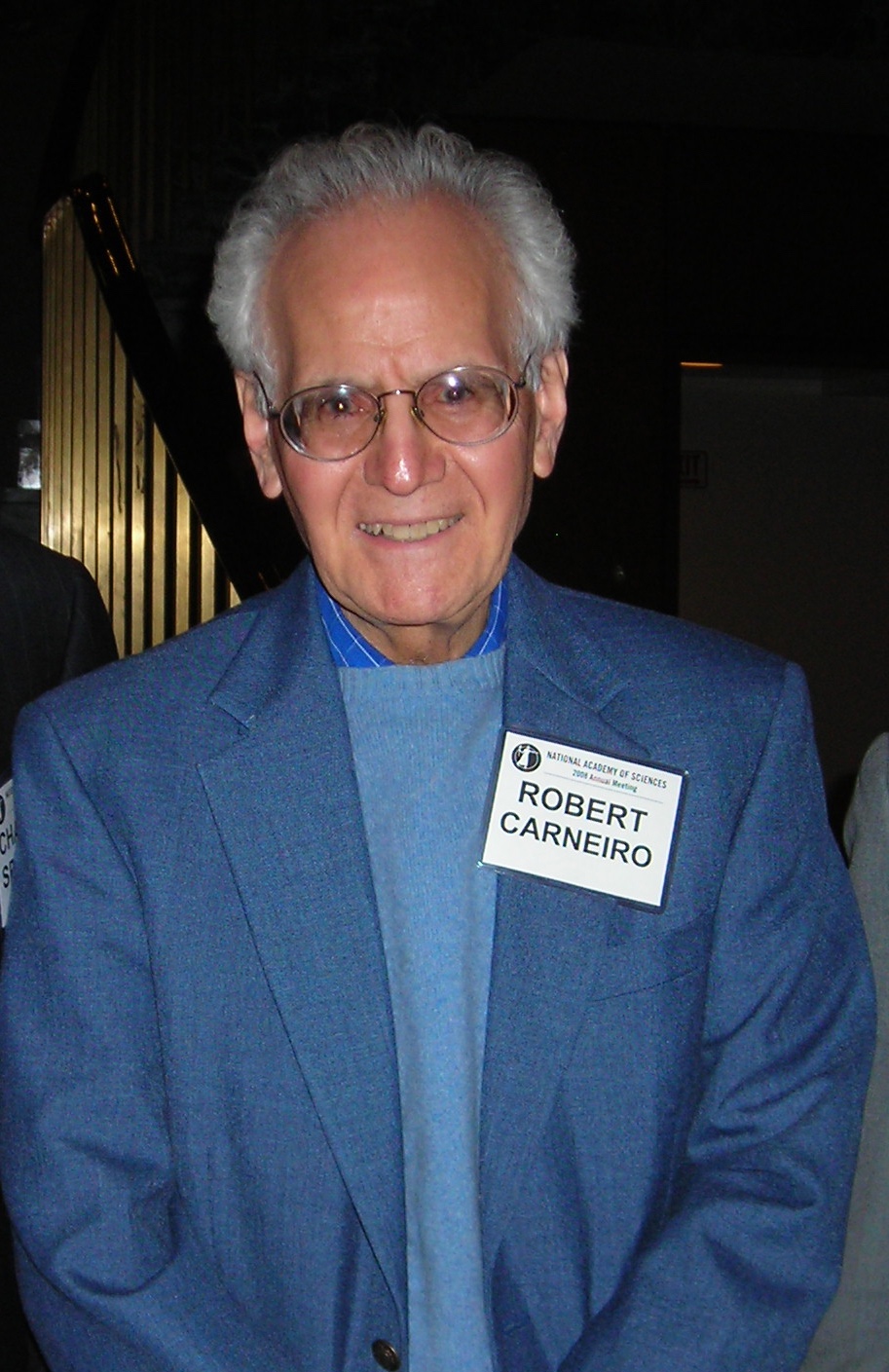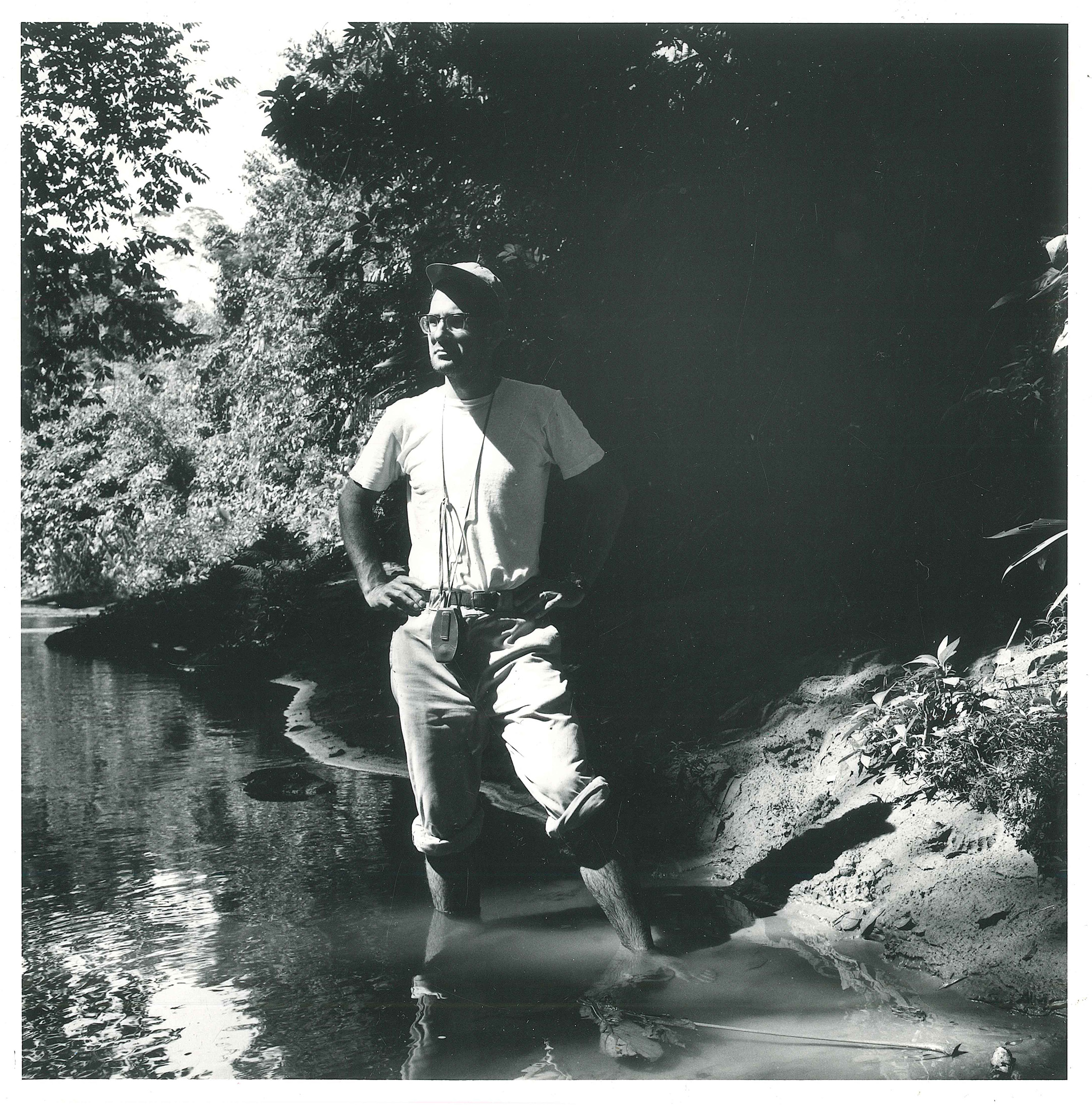Tribute to Bob Carneiro

He received his PhD from the University of Michigan in 1957. Carneiro was Curator of South American Ethnology at the American Museum of Natural History in New York and was the principal creator of its Hall of South American Peoples. He joined the curatorial staff of the AMNH in 1957 and began an active retirement in 2009.
Bob’s contributions to anthropology were threefold: South American ethnology, cultural evolution, and political evolution. Tackling a key question in the study of human societies, he addressed ways in which societies have evolved from simple, autonomous Neolithic villages into ever-larger and more complex polities, passing through various stages of development, including the chiefdom, and culminating in the formation of pre-industrial states and empires, and ascertaining the factors that best account for this transition. Through this work, he challenged a number of prevailing views about small horticultural societies, basing his evidence on meticulous research. His “circumscription theory” in relation to the development of chiefdoms and states became highly influential not only in anthropology, but within the social sciences more broadly. His findings were derived from fieldwork he conducted among two Amazonian peoples -- the Kuikuru of central Brazil and the Amahuaca of Peru.

Bob was among the first anthropologists to conduct extensive fieldwork in the Upper Xingú river basin. Invited there by the Villas-Bôas brothers, among the first Brazilian advocates for the indigenous peoples of the Xingu, Robert Carneiro and his first wife, Gertrude Dole, conducted fieldwork
from 1953 to 1954. The findings from that study contributed important revisions to Amazonian anthropology. In a series of landmark publications, Bob argued that the Amazon basin was not the depauperate environment incapable of sustaining large populations that some had thought. Through empirical observation and mathematical modeling, Bob demonstrated that the population of a single Kuikuru village could grow many times its present capacity without depleting resources. The implications were far-reaching, and revolutionized our understanding of carrying capacity, population dynamics, and sociopolitical formations of neotropical horticultural societies. Bob’s position, surprising and counterintuitive at the time, is now considered dogma.
His second large fieldwork project was to the Amazonian Amahuaca in the Upper Ucayali of Peru, in 1960-61. Again, his fieldwork experience contributed to his theory development. The Amahuaca, as Bob saw them, were far simpler than the Kuikuru, in ways that contributed to his focus on the evolutionary formation of societies. Bob was a devoted proponent of theories of cultural evolution, in spite of their having fallen out of fashion in academia. At the time of his death he was writing a new scholarly work on the subject. Bob was profoundly influenced by his mentor Leslie White at the University of Michigan, whose theory of evolution was based on the premise that harnessing energy was a key factor in the evolution of social complexity. Robert Carneiro proposed a theory of state origins based on the principle of circumscription in which competition over limited resources led to greater technological innovation, political organization, and warfare. According to Bob’s schema, village societies usually resolve social, political and resource problems by means of mobility. Under conditions of circumscription, a group’s ability to move is obstructed. As Bob’s work in cultural evolution extend to our understanding of Neolithic societies, and to questions of evolution worldwide. His writings were translated into many languages, and appeared as classic texts on course syllabi in many institutions.
Bob’s work reflects his great respect for the precision of scientific methodologies. Working among the Yanomami of Venezuela in the 1970s, he carried out an experiment comparing time and effort expended in felling trees with a stone ax and a steel ax. His curiosity and knowledge were vast, from the details of medieval castle construction to football scores. In his spare time, he submitted the latter to predictive models and wrote fiction under pen names. His knowledge of South American ethnography and archeology was immense, his commitment to hard evidence unyielding, and his intellectual honesty exemplary. He was a generous and conscientious mentor who counted many contemporary Americanists among his students. He was elected in 1999 to the National Academy of Sciences, and in 2012 to the American Academy of Arts and Sciences, two of many honors he received during his career.
One of Bob's many side interests was a 50 year fascination with the work of Herbert Spencer, partnering with the AMNH Library to create the online Herbert Spencer Cyclopedia: https://www.amnh.org/research/research-library/search/research-guides/herbert-spencer-cyclopedia. This is a three part resource: books on Spencer from the Library's collection and those donated by Bob, thousands of reprints related to Spencer that and -- the most fascinating and laboriously created component -- the Spencer quote albums meticulously assembled by Bobs on little scraps of paper on subjects ranging from "positivism" to "rationalism" to "Great Man theory" to "billiards."
.
Even in retirement Bob continued to write and publish, including a memoir on his experiences curating the Amazonia section of AMNH’s Hall of South American Peoples. At the time of his death he was writing about Kuikuru myths. His colleagues at the museum remember him not only as a wise and engaging colleague over almost 50 years, but also for the way he faced advancing infirmity with humor, grace and optimism. His son Brett relates how, during Bob’s final months in hospice care, and though not religious, he struck up a friendship with the visiting minister who had spent ten years in Brazil, a happy coincidence that fueled long conversations stretching the allotted 30 minute pastoral visit to two hours.
Bob Carneiro was married twice, both times to anthropologists. His first wife was Gertrude Dole, a fellow anthropologist with whom he shared Amazonian fieldwork and whose work on social organization and kinship often complemented his own. His second wife was Barbara Bode, who specialized in Andean environmental disaster and predeceased him by a few months. He is survived by a son, Brett Carneiro, and three grandchildren.
From an obituary written by Janet Chernela, 10516 Sweetbriar Pkwy., Silver Spring, Md 20903.
University of Maryland website, https://anth.umd.edu/facultyprofile/Chernela/Janet
Co-Director, CRACIA - www.cracia.org/people-page
With collective additions from the Division of Anthropology, AMNH, and from AMNH Library Director Thomas Baione.